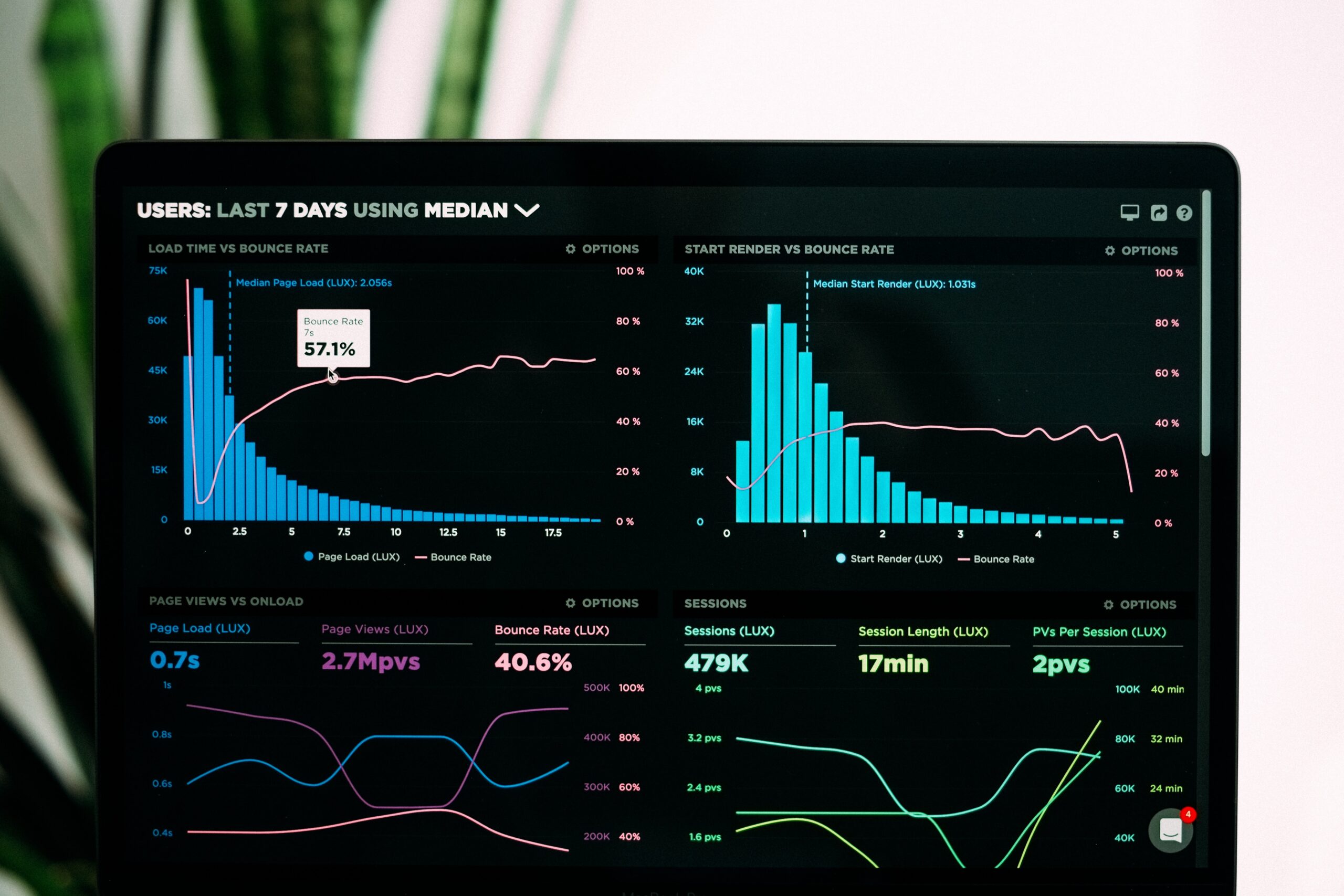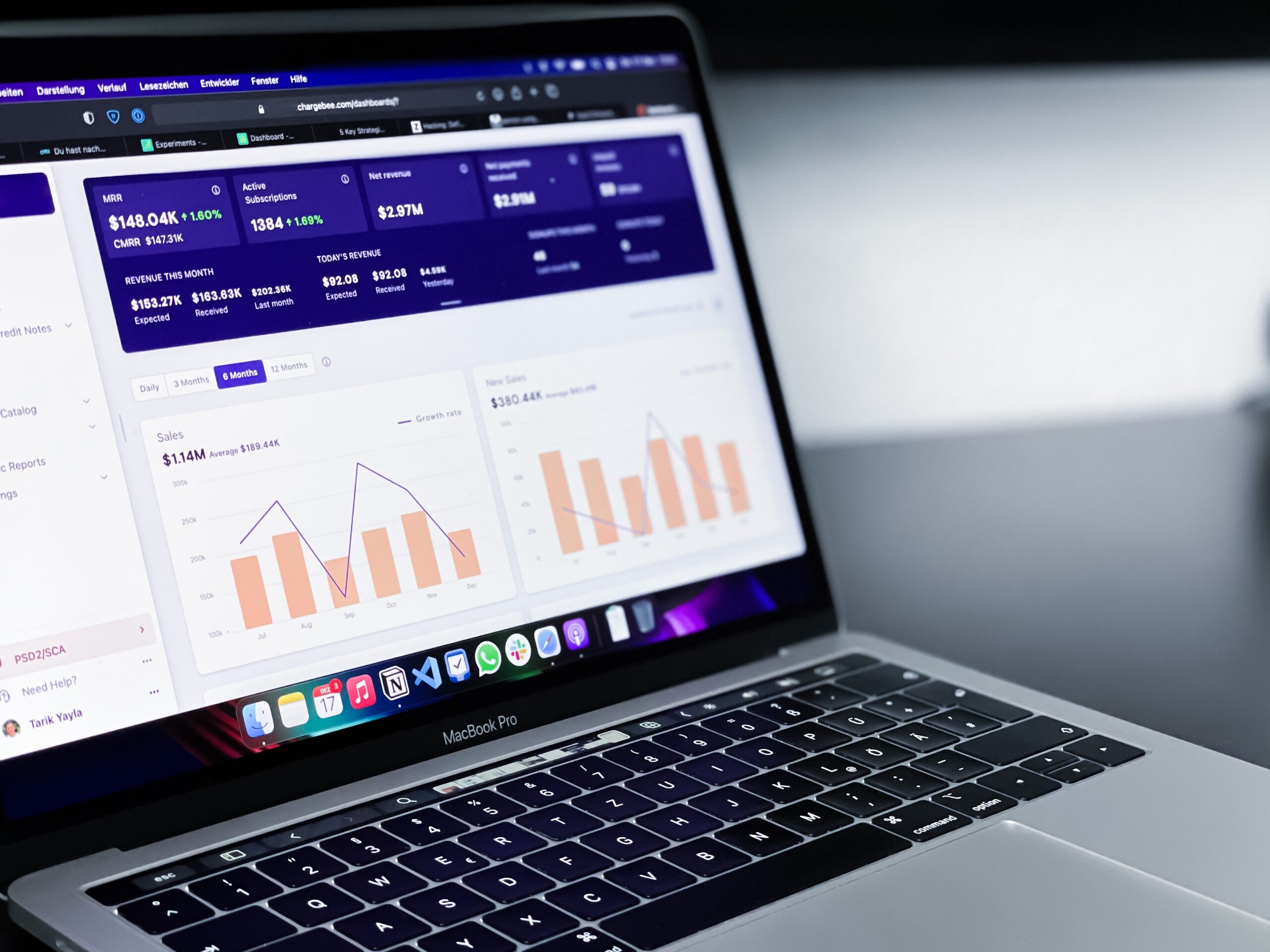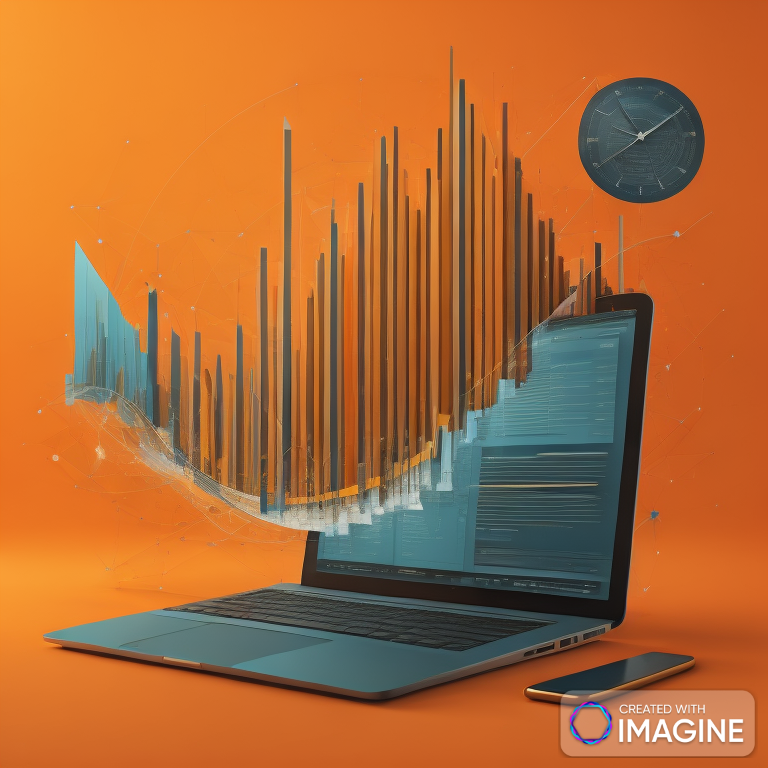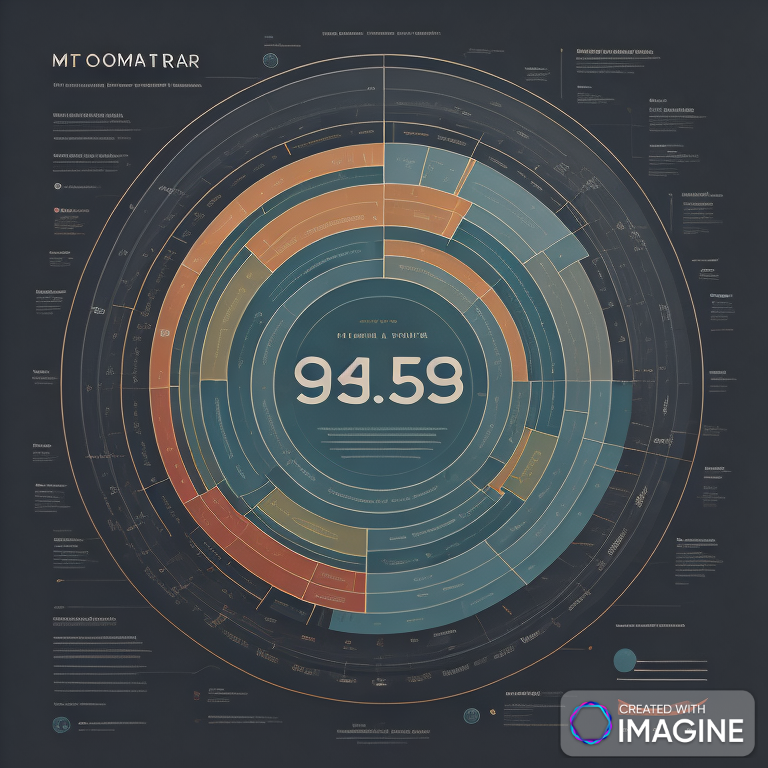In the ever-evolving landscape of data analytics, staying ahead of the curve is crucial for organizations aiming to harness the power of their data effectively. Here are some of the latest trends shaping the realm of data analytics:
Artificial Intelligence and Machine Learning Integration: The integration of artificial intelligence (AI) and machine learning (ML) continues to be a dominant trend. These technologies empower analytics tools to learn and adapt, providing more accurate predictions and insights over time.
Real-Time Data Analytics: In today’s fast-paced business environment, the demand for real-time insights is higher than ever. Real-time data analytics allows organizations to make informed decisions on the spot, responding swiftly to changing situations.
- Augmented Analytics: Augmented analytics combines human expertise with machine intelligence, automating data preparation, insight generation, and sharing. This empowers users of all skill levels to uncover meaningful insights without the need for specialized data science knowledge.
- Data Governance and Privacy: With increasing concerns about data privacy and security, there is a growing emphasis on robust data governance practices. Organizations are investing in ensuring that data is handled responsibly and complies with evolving privacy regulations.
- Cloud-Based Analytics: Cloud computing has revolutionized data analytics by providing scalable and flexible infrastructure. Cloud-based analytics enables organizations to store, process, and analyze vast amounts of data without the need for extensive on-premises hardware.
- Predictive and Prescriptive Analytics: Predictive analytics leverages historical data and machine learning to forecast future trends, while prescriptive analytics goes a step further by recommending actions to optimize outcomes. Both are gaining prominence for strategic decision-making.
- Natural Language Processing (NLP): Natural Language Processing is making analytics more accessible by allowing users to interact with data using natural language queries. This enhances the user experience and makes data-driven insights available to a broader audience.
- Data Democratization: Breaking down silos and making data accessible to a wider audience is a key trend. Data democratization involves empowering non-technical users to access and interpret data, fostering a data-driven culture across all levels of an organization.
- Edge Analytics: With the rise of the Internet of Things (IoT), edge analytics has become essential. This involves analyzing data at the source (edge devices) rather than relying solely on centralized servers. It improves response times and reduces the need to transfer large volumes of data.
- Explainable AI: As AI and ML algorithms become more complex, there’s a growing need for transparency and explainability. Explainable AI ensures that the decisions made by algorithms can be understood and trusted, addressing concerns about bias and ethical considerations.
- Automated Data Quality Management: Maintaining high-quality data is fundamental for accurate analytics. Automated data quality management tools are gaining prominence, helping organizations identify and rectify issues such as inconsistencies, duplications, and inaccuracies in their datasets.
- Graph Analytics: Especially relevant in social network analysis and fraud detection, graph analytics explores relationships between entities. This type of analysis is becoming more prevalent as organizations seek to understand the intricate connections within their data.
- Blockchain for Data Integrity: Blockchain technology is being employed to enhance data integrity and security. By providing an immutable ledger, blockchain ensures that once data is recorded, it cannot be altered. This is particularly valuable in industries where data tampering is a significant concern.
- Self-Service Analytics: Empowering business users to perform their own analyses without relying on IT or data experts is a growing trend. Self-service analytics tools are designed with user-friendly interfaces, enabling users across various departments to explore and visualize data independently.
- Spatial Analytics: Spatial analytics integrates geographic or location-based information into data analysis. This is valuable for businesses in retail, logistics, and urban planning, allowing them to gain insights from the spatial relationships within their data.
- Robotic Process Automation (RPA) and Analytics: Combining RPA with analytics enhances automation capabilities. RPA can handle repetitive tasks, while analytics provide insights into process efficiency and areas for improvement, leading to more informed decisions on automation.
- Edge AI: Building on edge analytics, Edge AI involves deploying AI algorithms directly on edge devices. This not only reduces latency but also addresses concerns about privacy and bandwidth, making it particularly relevant in scenarios where real-time decision-making is critical.
- Data Collaboration Platforms: Collaboration is key, and data collaboration platforms facilitate sharing and collaboration on data projects. These platforms enable teams to work seamlessly on analytics projects, ensuring that insights are accessible to those who need them.
- Continuous Intelligence: Continuous intelligence involves the use of real-time analytics to process data as it’s created. This ensures that insights are always up-to-date, allowing organizations to make informed decisions based on the latest information.
- Ethical AI and Responsible Data Usage: With increased awareness of the ethical implications of data analytics, organizations are focusing on responsible data usage. This includes implementing ethical AI practices, addressing bias in algorithms, and ensuring transparent and fair data practices.
- Behavioral Analytics: Understanding user behavior is crucial for businesses. Behavioral analytics involves analyzing patterns in user actions, providing insights into customer preferences, improving user experience, and enhancing personalized marketing strategies.
- DataOps for Efficient Data Management: DataOps, inspired by DevOps practices, focuses on collaboration and communication among data engineers, data scientists, and other data professionals. This approach streamlines the entire data lifecycle, from development to deployment, ensuring more efficient and agile data management.
- Quantum Computing Impact on Analytics: As quantum computing advances, it has the potential to revolutionize data analytics. Quantum algorithms could significantly speed up complex computations, opening new possibilities for handling large datasets and solving intricate analytical problems.
- Augmented Data Management: Augmented data management leverages AI and ML to automate manual tasks in data management processes. This includes data quality assessment, metadata management, and data lineage tracking, enhancing overall data governance.
- Hybrid Cloud Data Warehousing: Many organizations are adopting a hybrid cloud approach for their data warehousing needs. This involves using a combination of on-premises and cloud-based solutions, providing flexibility, scalability, and cost-effectiveness.
- Conversational Analytics: Conversational analytics enables users to interact with data through natural language interfaces. This fosters a more intuitive and accessible way for users to ask questions, receive insights, and make data-driven decisions through conversations with analytics tools.
- Dark Data Exploration: Dark data refers to unstructured or unused data that organizations collect but do not analyze. Exploring and analyzing dark data can uncover hidden insights, potentially leading to valuable discoveries and optimizations.
- Data Science Platforms: Integrated data science platforms are gaining traction, offering end-to-end solutions that streamline the entire data science workflow. These platforms facilitate collaboration, version control, and deployment of machine learning models.
- Edge-to-Cloud Analytics Integration: Seamless integration between edge devices and cloud platforms is becoming essential. This approach allows organizations to analyze data both at the edge for immediate decision-making and in the cloud for more in-depth and extensive analytics.
- Predictive Maintenance Analytics: Industries such as manufacturing and healthcare are increasingly adopting predictive maintenance analytics. By analyzing historical and real-time data, organizations can predict when equipment is likely to fail, enabling proactive maintenance to prevent costly downtime.
- Data Monetization Strategies: Organizations are exploring ways to turn their data into a valuable asset by developing data monetization strategies. This involves leveraging data to create new revenue streams, partnerships, or products, emphasizing the increasing recognition of data as a business asset.
- Emphasis on Data Ethics and Bias Mitigation: With the growing awareness of biases in algorithms and data, there’s a heightened emphasis on ethical considerations in data analytics. Ensuring fairness, transparency, and unbiased decision-making in analytics models is becoming a top priority.
- Federated Learning for Privacy-Preserving Analytics: Federated learning allows model training across decentralized devices without exchanging raw data. This approach is gaining traction in privacy-sensitive industries, as it enables collaborative model training while keeping data localized, addressing privacy concerns.
- Personalized Analytics Dashboards: The demand for personalized analytics experiences is rising. Analytics platforms are increasingly offering customizable dashboards, allowing users to tailor their view of data based on their specific roles, preferences, and priorities.
- Automated Exploratory Data Analysis (EDA): EDA is a critical step in understanding datasets, and automation is simplifying this process. Automated EDA tools help data scientists and analysts quickly explore and visualize data, accelerating the initial stages of the analytics workflow.
- Blockchain-Based Data Sharing: Blockchain technology is not only enhancing data integrity but also transforming data sharing. By providing a decentralized and secure ledger, blockchain facilitates trustworthy data sharing among multiple parties without the need for intermediaries.
- Geospatial Analytics for Location Intelligence: Geospatial analytics goes beyond traditional spatial analysis. It involves the interpretation of location-based data to gain insights into geographic patterns, enabling businesses to make informed decisions based on the geographical context of their data.
- Continuous Learning in Analytics Models: The concept of continuous learning involves updating analytics models in real-time as new data becomes available. This ensures that models remain accurate and relevant in dynamic environments, adapting to changing patterns and trends.
- Automated Anomaly Detection: Anomaly detection is crucial for identifying unusual patterns or outliers in data. Automated anomaly detection algorithms use machine learning to continuously monitor data and alert analysts to potential issues or irregularities.
- Cross-Channel Analytics for Omnichannel Insights: In the era of omnichannel experiences, cross-channel analytics integrates data from various channels (online and offline) to provide a comprehensive view of customer interactions. This approach helps businesses optimize their strategies across multiple touchpoints.
- Data Fabric Architecture: Data fabric architecture provides a unified and consistent view of data across different environments—on-premises, in the cloud, or at the edge. This seamless integration ensures data accessibility and consistency for analytics applications.
- Temporal Analytics for Time-Dependent Insights: Temporal analytics focuses on analyzing data over time, uncovering trends, patterns, and correlations that evolve with temporal changes. This is especially crucial in industries where time-sensitive decisions play a pivotal role, such as finance and healthcare.
- Causation Analytics Beyond Correlation: Moving beyond correlation, causation analytics seeks to identify cause-and-effect relationships within data. Understanding the true drivers behind trends allows for more informed decision-making and strategic planning.
- Data Fusion for Comprehensive Insights: Data fusion involves combining information from diverse sources and types, such as structured and unstructured data. This holistic approach enables organizations to gain comprehensive insights by considering multiple dimensions of their data.
- Homomorphic Encryption for Secure Computations: Homomorphic encryption allows computations to be performed on encrypted data without the need for decryption. This enhances security in scenarios where sensitive data needs to be analyzed while preserving confidentiality.
- Human Augmentation with Analytics: Human augmentation involves enhancing human capabilities through technologies like wearable devices. Integrating analytics into these devices provides individuals with personalized insights, whether for health monitoring or performance optimization.
- Predictive Analytics for Employee Retention: Predictive analytics is extending beyond customer-centric applications to predict employee behavior. Organizations are leveraging data to identify factors influencing employee retention, allowing for proactive strategies to retain top talent.
- Emotional Analytics in Customer Interaction: Emotional analytics analyzes customer interactions to gauge emotional responses. This insight is valuable for businesses aiming to enhance customer experiences by understanding and responding to the emotional aspects of their interactions.
- Data Narration and Storytelling: The ability to communicate data insights effectively is gaining prominence. Data narration and storytelling involve presenting analytics findings in a compelling and understandable manner, making it easier for diverse audiences to grasp complex insights.
- Edge Stream Processing: Edge stream processing involves analyzing data at the edge of the network as it is generated. This is particularly relevant in scenarios where low-latency analytics are essential, such as in IoT applications or real-time monitoring systems.
- Preservation of Data Lineage: Data lineage tracking ensures a transparent record of the origins, transformations, and movements of data throughout its lifecycle. Preserving data lineage is crucial for compliance, auditing, and ensuring the accuracy and reliability of analytics results.
- Neuro-Inclusive Design for Analytics Interfaces: Neuro-inclusive design considers diverse cognitive abilities when designing analytics interfaces. This trend focuses on creating interfaces that are accessible and user-friendly for individuals with varying cognitive needs.
- Quantified Self Data for Personal Analytics: With the rise of wearable devices and health apps, individuals are increasingly generating quantified self-data. Analyzing this personal data provides insights into health, habits, and lifestyle, contributing to a more holistic approach to well-being.
- Blockchain-Based Smart Contracts for Data Transactions: Utilizing smart contracts on blockchain platforms for data transactions ensures transparent and automated execution of agreements. This adds an additional layer of trust and efficiency in data exchanges and collaborations.
- Adversarial Machine Learning for Security: Adversarial machine learning involves training models to resist adversarial attacks. This is crucial in security-sensitive applications, preventing malicious attempts to manipulate or deceive machine learning models.
- These trends showcase the multifaceted and dynamic nature of data analytics, emphasizing the importance of staying agile and innovative in leveraging data for informed decision-making.
- Biometric Data Analytics: Analyzing biometric data, such as fingerprints, facial recognition, and voice patterns, is gaining traction for identity verification, security, and personalized user experiences.
- Data Catalogs and Metadata Management: Efficient data management relies on comprehensive data catalogs and metadata management. These tools facilitate the discovery, understanding, and governance of data assets across an organization.
- Ethnographic Data Analysis: Ethnographic data analysis involves studying human behavior within specific cultural contexts. Incorporating this qualitative approach into analytics provides richer insights, particularly valuable for understanding customer behaviors and preferences.
- Sustainable Data Analytics Practices: Sustainability in data analytics involves optimizing processes to minimize environmental impact. This includes energy-efficient computing, responsible sourcing of hardware, and overall eco-friendly data management practices.
- Quantified Agriculture with Precision Farming: Precision farming leverages data analytics and IoT devices to optimize agricultural practices. Farmers can make data-driven decisions on irrigation, fertilization, and crop management, leading to increased efficiency and reduced environmental impact.
- Data Collaboration Across Ecosystems: As ecosystems become more interconnected, data collaboration extends beyond organizational boundaries. Collaborative analytics between companies, industries, and even competitors can lead to shared insights and mutual benefits.
- Augmented Reality (AR) Data Visualization: AR is being integrated into data visualization tools, allowing users to interact with and explore data in immersive environments. This enhances the understanding of complex datasets and supports more intuitive decision-making.
- Data-Driven Design in User Experience (UX): UX designers are increasingly incorporating data-driven insights into the design process. Analyzing user interactions and feedback enables iterative improvements, creating more user-friendly and effective digital experiences.
- Robust Data Security Measures: With the rising threat of cyberattacks, ensuring robust data security is non-negotiable. Advanced encryption, multi-factor authentication, and continuous monitoring are integral parts of modern data analytics security strategies.
- Automated Data Curation: Automated data curation involves using AI algorithms to organize, clean, and enhance datasets. This ensures that data used in analytics is of high quality, reducing the risk of biases and inaccuracies.
- Open Source Analytics Tools and Communities: Open source analytics tools and communities are flourishing, fostering collaboration and innovation. Organizations are increasingly adopting open-source solutions, benefitting from a wide range of tools and a collaborative development environment.
- Inclusive Design in Data Visualizations: Inclusive design in data visualizations aims to make analytics accessible to individuals with diverse abilities. This involves creating visualizations that consider color contrast, font sizes, and alternative formats for those with visual or cognitive impairments.
- Data Sovereignty and Compliance: Data sovereignty refers to the legal and jurisdictional control over where data is stored and processed. Compliance with data protection regulations, such as GDPR, is crucial, and organizations are investing in solutions that ensure adherence to these laws.
- Data-Driven Supply Chain Optimization: Leveraging
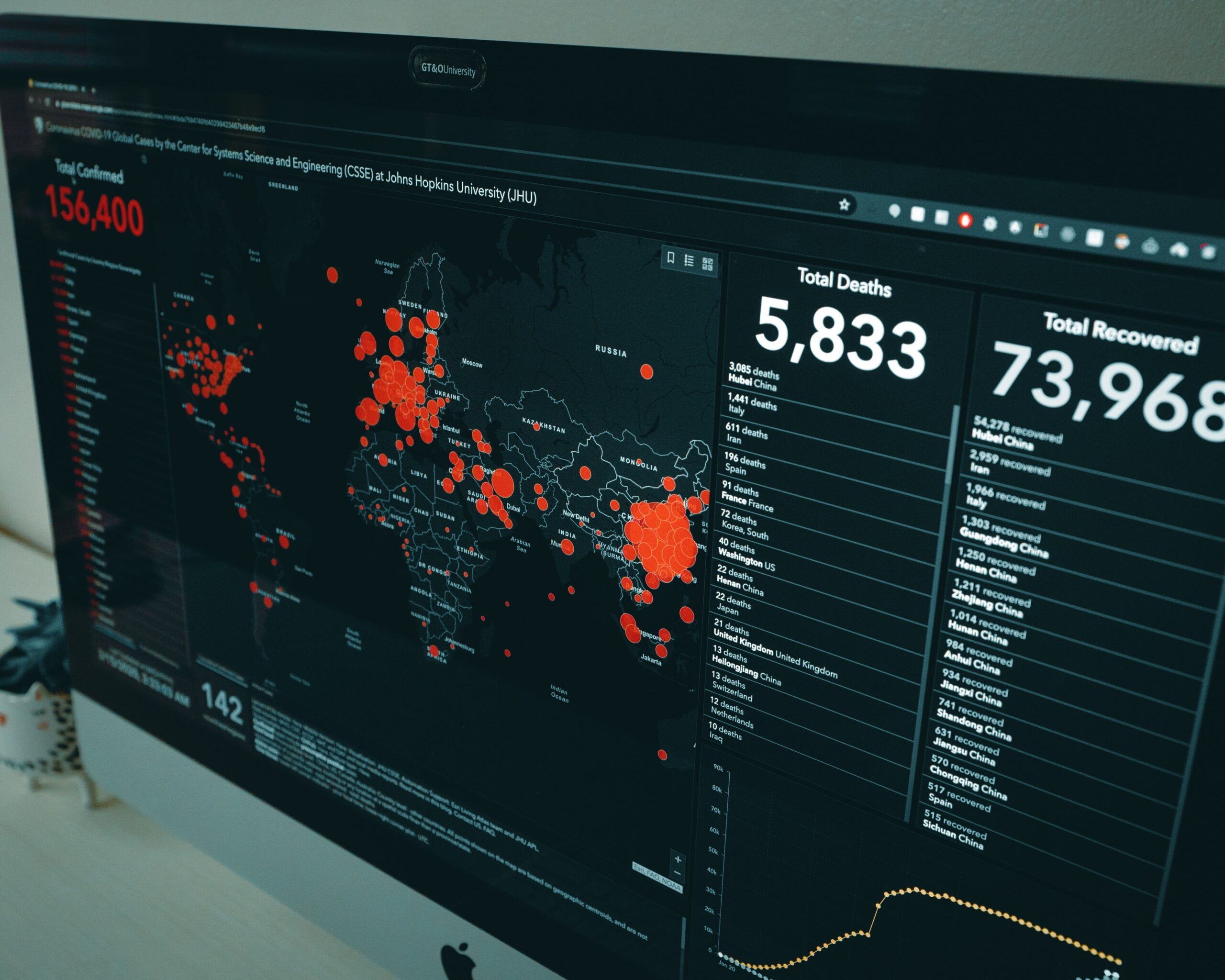 in supply chain management optimizes inventory, reduces lead times, and enhances overall efficiency. Predictive analytics aids in demand forecasting, helping organizations adapt to dynamic market conditions.
in supply chain management optimizes inventory, reduces lead times, and enhances overall efficiency. Predictive analytics aids in demand forecasting, helping organizations adapt to dynamic market conditions. - AI-Driven Hyperautomation: Hyperautomation involves the use of AI and machine learning to automate a wide range of business processes. Integrating analytics into hyperautomation enhances decision-making within automated workflows.
- Data Integration Platforms for Seamless Connectivity: Comprehensive data integration platforms enable seamless connectivity between disparate data sources. This facilitates a unified view of data, essential for holistic analytics and informed decision-making.
- These additional trends further underscore the depth and diversity of advancements in data analytics, showcasing the ongoing evolution of strategies, technologies, and applications in this dynamic field.

